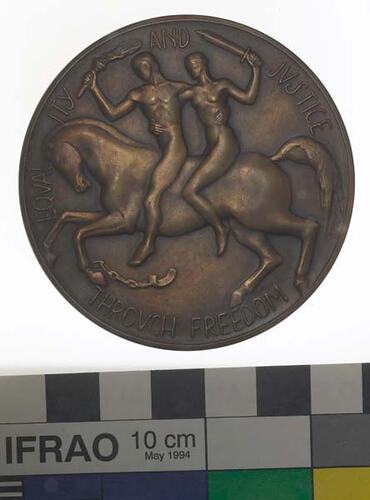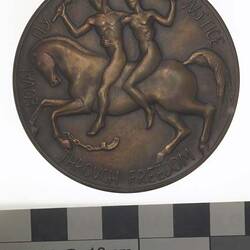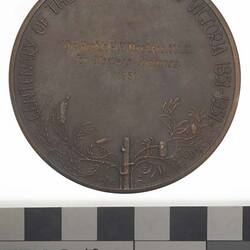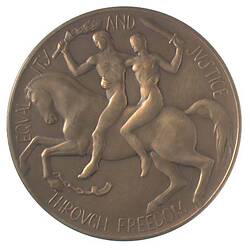From 1836 to 1851 Port Phillip, a district of New South Wales, was administered from Sydney. In 1850 the District was separated from New South Wales and was renamed Victoria under the Australian Constitutions Act 1850 (UK). The New South Wales Parliament passed the necessary legislation and separation took effect on 1 July 1851. Victoria gained a two-thirds elected legislature.
In 1855 responsible government was established in Victoria with the Victoria Constitution Act 1855 (UK). The same year Victoria passed the the Chinese Immigration Act, the Australian colonies' first act restricting immigration. The following year voting by secret ballot was introduced in Victoria under the Electoral Act 1856 (Vic). The Government continued to develop acts, like the Education Act 1872 (Vic), which set up a central public school system based on the principles of free, secular and compulsory education. Victoria's parliaments were preoccupied with such issues as land settlement, regional development, Legislative Council powers, payment of Members and electoral reform. In 1896 Victoria passed a Federation Enabling Act and in 1898 the franchised Victorian population voted 'yes' in referendum for Federation.
Under the Commonwealth of Australia Constitution Act 1900 (UK) and the Royal Commission of Assent 9 July 1900 (UK) Australia became a federated nation. Victoria, no longer a colony, was now governed by a State Government. Women in Victoria won the right to vote in State elections in 1908.
Between 1901 and 1935 there were 15 Victorian Ministries. Internal disputes within the three political parties - Labor, Liberal and Country - and an electoral distribution that favoured the return of non-metropolitan political candidates, ensured frequent changes of Government. From 1935 until 1945 (with a brief break) the Country Party held office. This was the most stable period so far experienced in the Parliament. From 1945 until 1955, the Parliament again changed frequently, but from 1955 to 1982 the Liberal Country Party (later the Liberal Party) held office. The Australian Labor Party held office until 1992 when it was defeated by the Liberal Party under the leadership of Jeffrey Gibb Kennett in coalition with the National Party. At the September/October 1999 election the Australian Labor Party regained office led by Stephen Phillip Bracks. Since 1955 the party in government has only changed hands three times.
In 2004 the Parliament of Victoria comprised 132 Members: 88 Members of the Legislative Assembly and 44 Members of the Legislative Council. Lower House Members each represent a single Electoral District. Legislative Councillors share 22 Electoral Provinces, with two Members representing each province. Each Electoral Province is made up of 4 Electoral Districts.
Lower House Members are elected for a period of three to four years. Members of the Upper House are elected for two consecutive terms of the Legislative Assembly. Governments can call an election any time in the fourth year after an election.
References:
Documenting a Democracy website, Commonwealth of Australia http://www.foundingdocs.gov.au/timeline/part_iii.htm
Victorian Government history website http://www.parliament.vic.gov.au/hist.html.
More Information
-
Keywords
-
Localities
-
Authors
-
Article types



